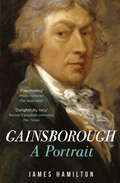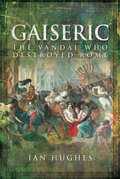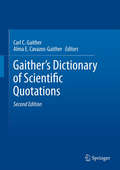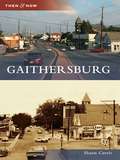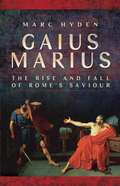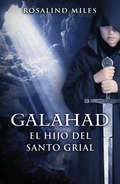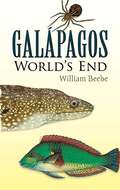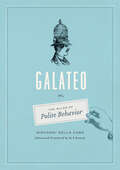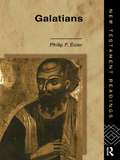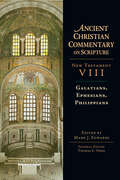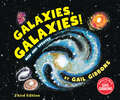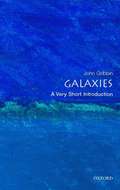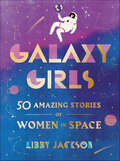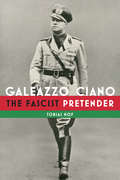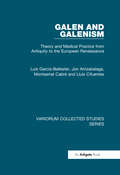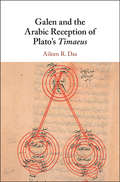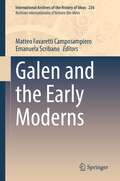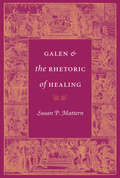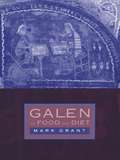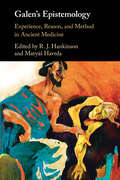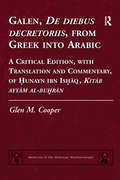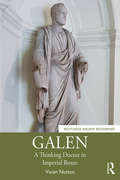- Table View
- List View
Gainsborough: A Portrait
by James Hamilton** Selected as a Book of the Year in The Times, Sunday Times and Observer **'Compulsively readable - the pages seem to turn themselves' John Carey, Sunday Times 'Brings one of the very greatest [artists] vividly to life' Literary Review Thomas Gainsborough (1727-88) lived as if electricity shot through his sinews and crackled at his finger ends. He was a gentle and empathetic family man, but had a shockingly loose, libidinous manner and a volatility that could lead him to slash his paintings. James Hamilton reveals the artist in his many contexts: the talented Suffolk lad, transported to the heights of fashion; the rake-on-the-make in London, learning his craft in the shadow of Hogarth; the society-portrait painter in Bath and London who earned huge sums by charming the right people into his studio. With fresh insights into original sources, Gainsborough: A Portrait transforms our understanding of this fascinating man, and enlightens the century that bore him.
Gainsborough: A Portrait
by James Hamilton'Compulsively readable - the pages seem to turn themselves' John Carey, Sunday TimesThomas Gainsborough (1727-88) lived as if electricity shot through his sinews and crackled at his finger ends. He was a gentle and empathetic family man, but had a volatility that could lead him to slash his paintings, and a loose libidinous way of speaking, writing and behaving that shocked many deeply. He would be dynamite in polite society today.In this exhilarating new biography - the first in decades - James Hamilton reveals Gainsborough in his many contexts: the easy-going Suffolk lad, transported to the heights of fashion by a natural talent; the rake-on-the-make in London, learning his art in the shadow of Hogarth; falling on his feet when he married a duke's daughter with a handsome private income; the top society-portrait painter in Bath and London who earned huge sums by bringing the right people into his studio; the charming and amusing friend of George III and Queen Charlotte who nevertheless kept clear of the aristocratic embrace.There has been much art history written about this chameleon of art, but with fresh insights into original sources, Gainsborough: A Portrait transforms our understanding of this fascinating man, and enlightens the century that bore him.
Gaiseric: The Vandal Who Destroyed Rome
by Ian HughesWhile Gaiseric has not become a household name like other 'barbarian' leaders such as Attila or Genghis Khan, his sack of Rome in AD455 has made his tribe, the Vandals, synonymous with mindless destruction. Gaiseric, however, was no moronic thug, proving himself a highly skilful political and military leader and was one of the dominant forces in Western Mediterranean region for almost half a century.The book starts with a concise history of the Vandals before Gaiseric's reign and analyses the tactics and weaponry with which they carved a path across the Western Roman Empire to Spain. It was in Spain that Gaiseric became their king and he that led the Vandals across the straits of Gibraltar to seize a new home in North Africa, depriving Rome of one of its most important remaining provinces and a key source of grain. Roman attempts at reconquest were defeated and the Balearic Islands, Sicily, Corsica and Sardinia were all added to Gaiseric's kingdom. His son, Huneric, was even betrothed to Eudoxia, daughter of the Emperor Valentinian III and it was her appeal for help after her father's murder that led Gaiseric to invade and sack Rome. He took Eudoxia and the other imperial ladies back to Africa with him, subsequently defeating further attempts by the Eastern Roman Empire to recapture the vital North African territory. Ian Hughes' analysis of the Gaiseric as king and general reveals him as the barbarian who did more than anyone else to bring down the Western Roman Empire, but also as a great leader in his own right and one of the most significant men of his age.
Gaither's Dictionary of Scientific Quotations
by Carl C. Gaither Alma E. Cavazos-GaitherThis unprecedented collection of 27,000 quotations is the most comprehensive and carefully researched of its kind, covering all fields of science and mathematics. With this vast compendium you can readily conceptualize and embrace the written images of scientists, laymen, politicians, novelists, playwrights, and poets about humankind's scientific achievements. Approximately 9000 high-quality entries have been added to this new edition to provide a rich selection of quotations for the student, the educator, and the scientist who would like to introduce a presentation with a relevant quotation that provides perspective and historical background on his subject. Gaither's Dictionary of Scientific Quotations, Second Edition, provides the finest reference source of science quotations for all audiences. The new edition adds greater depth to the number of quotations in the various thematic arrangements and also provides new thematic categories.
Gaithersburg
by Shaun CurtisWith its roots as a small community known as Log Town in the 1750s, agriculture was the way of life for people in Gaithersburg. Today most of the farmland has been developed into shopping centers, businesses, and housing developments. With growth, Gaithersburg has become a center of science and technology in the United States. Author Shaun Curtis grew up in Gaithersburg and spends his time promoting the history of the city.
Gaius Marius: The Rise and Fall of Rome's Saviour
by Marc HydenGaius Marius was one of the most remarkable and significant figures of the late Roman Republic. At a time when power tended to be restricted to a clique of influential families, he rose from relatively humble origins to attain the top office of consul. He even went on to hold the post an unprecedented seven times. His political career flourished but was primarily built on military success. First serving in the Numantine War in Spain, he later rose to high command and brought a long-running war in North Africa to a successful conclusion, bringing the Numidian King Jurgurtha back in chains. His return was timely as northern barbarian tribes threatened Italy and had previously defeated several Roman armies. Marius reformed and retrained the Republic's forces and decisively defeated the invaders that had easily overpowered his predecessors. Marius' subsequent career was primarily that of an elder statesman, but it was dominated by his rivalry with his erstwhile subordinate, Sulla, which ultimately led to the latter's bloody coup. Marius, once hailed as the savior of Rome, eventually became a desperate fugitive, literally fleeing for his life from his pursuers. However, after several harrowing brushes with death, Marius seized an opportunity to return to Rome and mete out justice to his enemies, which tarnished his once-enviable reputation.
Galahad, el hijo del Santo Grial (Trilogía de Ginebra #Volumen 3)
by Rosalind MilesGalahad, la novela que cierra la magnífica trilogía sobre Camelot. En el corazón de Camelot, el rey Arturo y la reina Ginebra gobiernan una tierra en paz, mientras se preparan para armar caballero a Mordred, hijo y heredero de Arturo, quien se sumará a los caballeros de la Tabla Redonda. Pero en la profundidad de su cueva, Merlín presiente una nueva amenaza que se cierne sobre el rey Arturo. Tras mucho tiempo, el Santo Grial ha surgido a la luz de nuevo, junto con el vaticinio de un misterioso niño que deberá encontrarlo para cumplir con su destino. Los enemigos del pasado acechan a Arturo y sus caballeros, mientras la reina cuenta con el amor del caballero Lanzarote del Lago. Sin embargo, la lealtad de Lanzarote se verá cuestionada y Ginebra deberá enfrentarse al espectro de una traición.
Galapagos: World's End
by William Beebe"Galápagos is a glorious book. It is high romance, exact science, fascinating history, wild adventure."--NationThe Galápagos Islands are famed for their remarkable wildlife, including land and marine iguanas, land tortoises, four-eyed fish, and flightless cormorants and albatross. In 1835, Charles Darwin observed variations among the islands' species that inspired him to formulate the theory of natural selection. Eighty-eight years later, in 1923, a scientific expedition sponsored by the New York Zoological Society followed in Darwin's wake. Led by renowned biologist and explorer William Beebe, the scientists visited the the islands to study and obtain specimens of indigenous plants and animals. This is Beebe's personal account of that fascinating expedition.Combining rare literary skill with careful research, Beebe produced an exceptionally readable volume, replete with youthful enthusiasm, a romantic's awe before the mysteries of nature, and a scientist's passion for accurate description. He recounts the expedition's enormously productive results, including specimens of 60 species previously unknown to science, and an unparalleled accumulation of data that stimulated many scientific papers and new avenues of naturalistic inquiry. Beebe's account is enhanced with more than 100 splendid illustrations, selected from hundreds of paintings, drawings, and photographs by expedition members. A classic of popular science, it is scientifically rigorous as well as exciting and accessible.
Galateo: Or, The Rules of Polite Behavior
by Giovanni Della Casa“Since it is the case that you are now just beginning that journey that I have for the most part as you see completed, that is, the one through mortal life, and loving you so very much as I do, I have proposed to myself—as one who has been many places—to show you those places in life where, walking through them, I fear you could easily either fall or take the wrong direction.” So begins Galateo, a treatise on polite behavior written by Giovanni Della Casa (1503–56) for the benefit of his nephew, a young Florentine destined for greatness. In the voice of a cranky yet genial old uncle, Della Casa offers the distillation of what he has learned over a lifetime of public service as diplomat and papal nuncio. As relevant today as it was in Renaissance Italy, Galateo deals with subjects as varied as dress codes, charming conversation and off-color jokes, eating habits and hairstyles, and literary language. In its time, Galateo circulated as widely as Machiavelli’s Prince and Castiglione’s Book of the Courtier. Mirroring what Machiavelli did for promoting political behavior, and what Castiglione did for behavior at court, Della Casa here creates a picture of the refined man caught in a world in which embarrassment and vulgarity prevail. Less a treatise promoting courtly values or a manual of savoir faire, it is rather a meditation on conformity and the law, on perfection and rules, but also an exasperated—often theatrical—reaction to the diverse ways in which people make fools of themselves in everyday social situations. With renewed interest in etiquette and polite behavior growing both inside and outside the academy, the time is right for a new, definitive edition of this book. More than a mere etiquette book, this restored edition will be entertaining (and even useful) for anyone making their way in modern civilized and polite society, and a subtle gift for the rude neighbor, the thoughtless dinner guest, or the friend or relative in need of a refresher on proper behavior.
Galatians (New Testament Readings)
by Philip F. EslerPaul's letter to the Galatians, sometimes known as the Magna Carta of Christian liberty, is central to the understanding of the relation of Paul and the Law and is packed with crucial historical, social and theological material.Philip F. Esler provides a detailed and accessible interpretation of the text, which draws on contemporary and modern literary models. He outlines the problems often associated with reading Galatians, the context of the text, the rhetoric of the text and the intercultural and social implications of Galatians. Galatians includes comprehensive indices of ancient sources and modern sources, detailed references and an appendix discussing Paul's attitude to the Law in Romans 5.20-21.Galatians presents a succinct and emminently readable analysis of a dense and important New Testament text.
Galatians, Ephesians, Philippians: New Testament (Ancient Christian Commentary on Scripture #8)
by Mark J. EdwardsPaul's letters to the Galatians, Ephesians and Philippians have struck an indelible impression on Christian tradition and piety. The doctrines of Christ, of salvation and of the church all owe their profiles to these letters. And for patristic interpreters, who read Scripture as a single book and were charged with an insatiable curiosity regarding the mysteries of the Godhead, these letters offered profound visions seldom captured by modern eyes. Trinitarian truth was patterned in the apostle's praise of God who is "over all, through all and in all" (Ephesians 4:6). Without a doubt, the greatest text in this collection of letters is the "Christ hymn" of Philippians 2:6-11. This commentary offers an unparalleled close-up view of the fathers weighing the words and phrases of this panoramic charting of the Savior's journey from preexistence, to incarnation, to crucifixion, to triumphant exaltation as universal Lord. This volume opens a treasury of resources for biblical study today. The expository voices of Jerome, Origen, Augustine, Chrysostom, Ambrosiaster, Theodoret, Marius Victorinus and Theodore of Mopsuestia speak again with eloquence and intellectual acumen, some in English translation for the first time.
Galaxies, Galaxies! (New & Updated Edition)
by Gail GibbonsPlanet Earth is in the Milky Way Galaxy, the cloudy band of light that stretches clear across the night sky. How many galaxies are there in the universe? For years astronomers thought that the Milky Way was the universe. Now we know that there are billions of them. Gail Gibbons takes the reader on a journey light-years away.
Galaxies, Galaxies! (Third Edition)
by Gail GibbonsLearn about the newest discoveries in the Milky Way and beyond in this updated edition from nonfiction master Gail Gibbons.Planet Earth is in the Milky Way Galaxy, the cloudy band of light that stretches clear across the night sky. How many galaxies are there in the universe? For years astronomers thought that the Milky Way was the universe. Now we know that there are billions of them. Gail Gibbons takes the reader on a journey light-years away.This updated edition vetted by an expert introduces young readers to our own galaxy the Milky Way and beyond. Learn how ancient people invented the telescope and began studying the Milky Way to the modern technology astronomers use to study other galaxies.Gail Gibbon&’s easy-to-read text and clearly labeled illustrations welcomes young readers to learn how telescopes work, about the different types of galaxies, how many galaxies we know of today, and more.
Galaxies: A Very Short Introduction
by John GribbinIn this fascinating Very Short Introduction, popular science writer John Gribben tells the story of our growing understanding of galaxies, from the days before Galileo to our present-day observations of our many hundreds of millions of galactic neighbors. Not only are galaxies fascinating astronomical structures in themselves, but their study has revealed much of what we know today about the cosmos, providing a window on the Big Bang and the origins of the Universe. Gribben looks at our own "Milky Way" Galaxy in detail, from the different kinds of stars that are born within it, to the origins of its magnificent spiral structure. Perhaps most interesting, Gribben describes the many exciting discoveries have been made about our own galaxy and about those beyond: how a supermassive black hole lurks at the center of every galaxy, how enormous forces are released when galaxies collide, how distant galaxies provide a window on the early Universe, and how the formation of young galaxies shed needed light on the mysteries of Cold Dark Matter.
Galaxy Girls: 50 Amazing Stories of Women in Space
by Libby JacksonFilled with beautiful full-color illustrations, a groundbreaking compendium honoring the amazing true stories of fifty inspirational women who helped fuel some of the greatest achievements in space exploration from the nineteenth century to today—including Hidden Figure’s Mary Jackson and Katherine Johnson as well as former NASA Chief Astronaut Peggy Whitson, the record-holding American biochemistry researcher who has spent the most cumulative time in space.When Neil Armstrong stepped off the ladder of the lunar module, Eagle, he famously spoke of “one small step for man.” But Armstrong would not have reached the moon without the help of women. Today, females across the earth and above it—astronauts and mathematicians, engineers and physicists, test pilots and aerospace psychophysiologists—are pushing the boundaries of human knowledge, helping us to understand the universe and our place in it. Galaxy Girls celebrates more than four dozen extraordinary women from around the globe whose contributions have been fundamental to the story of humankind’s quest to reach the stars.From Ada Lovelace in the nineteenth century to the “colored computers” behind the Apollo missions, from the astronauts breaking records on the International Space Station to the scientific pioneers blazing the way to Mars, Galaxy Girls goes boldly where few books have gone before, celebrating this band of heroic sisters and their remarkable and often little known scientific achievements. Written by Libby Jackson, a leading British expert in human space flight, and illustrated with striking artwork from the students of London College of Communication, Galaxy Girls will fire the imaginations of trailblazers of all ages.
Galeazzo Ciano: The Fascist Pretender (Toronto Italian Studies)
by Tobias HofBuilding on extensive archival research and important scholarly analysis, Galeazzo Ciano: The Fascist Pretender examines the life of Galeazzo Ciano, foreign minister of fascist Italy from 1936 to 1943 and Benito Mussolini’s son-in-law. Ciano’s life serves as a lens through which to gain a better understanding of crucial issues of Italian and European fascism, including the fascistization of society and politics, foreign relations, and the problem of succession. The biography follows an innovative thematic structure that focuses on major aspects of Ciano’s life, including his family, his political career, his diplomacy, and his desire to succeed Mussolini. Filling a substantial gap in the existing literature on the history of fascism, this book is the first comprehensive analysis of a key player of Italian fascism other than Mussolini; it also offers a long overdue critical assessment of Ciano’s famous diary, one of the most important texts from the period. Using visual materials such as photographs and films as sources and not just as illustrative material, Tobias Hof allows us to rethink our understanding of fascism and offers a new perspective on the history of fascist Italy.
Galen and Galenism: Theory and Medical Practice from Antiquity to the European Renaissance (Variorum Collected Studies)
by Jon Arrizabalaga Luis García-Ballester Montserrat Cabré Lluís CifuentesGalenism, a rational, coherent medical system embracing all health and disease related matters, was the dominant medical doctrine in the Latin West during the Middle Ages and the Renaissance. Deriving from the medical and philosophical views of Galen (129-c.210/6) as well as from his clinical practice, Latin Galenism had its origins in 12th-century Salerno and was constructed from the cultural exchanges between the Arabic and Christian worlds. It flourished all over Europe, following the patterns of expansion of the university system during the subsequent centuries and was a major factor in shaping the healing systems of the Christian, Jewish and Muslim communities - the subject of a previous volume by Professor GarcÃa-Ballester. The present collection deals with a wide array of issues regarding the historical Galen and late medieval and Renaissance Galenism, but focuses in particular on the relationship between theory and practice. It includes first English versions of two major studies originally published in Spanish.
Galen and the Arabic Reception of Plato's Timaeus
by Aileen R. DasThis first full-length study of the Arabic reception of Plato's Timaeus considers the role of Galen of Pergamum (129–c. 216 CE) in shaping medieval perceptions of the text as transgressing disciplinary norms. It argues that Galen appealed to the entangled cosmological scheme of the dialogue, where different relations connect the body, soul, and cosmos, to expand the boundaries of medicine in his pursuit for epistemic authority – the right to define and explain natural reality. Aileen Das situates Galen's work on disciplinary boundaries in the context of medicine's ancient rivalry with philosophy, whose professionals were long seen as superior knowers of the cosmos vis-à-vis doctors. Her case studies show how Galen and four of the most important Christian, Muslim, and Jewish thinkers in the Arabic Middle Ages creatively interpreted key doctrines from the Timaeus to reimagine medicine and philosophy as well as their own intellectual identities.
Galen and the Early Moderns (International Archives of the History of Ideas Archives internationales d'histoire des idées #236)
by Matteo Favaretti Camposampiero Emanuela ScribanoThis book explores the presence of Galen of Pergamon (129 – c. 216 AD) in early modern philosophy, science, and medicine. After a short revival due to the humanistic rediscovery of his works, the influence of the great ancient physician on Western thought seemed to decline rapidly as new discoveries made his anatomy, physiology, and therapeutics more and more obsolete. In fact, even though Galenism was gradually dismissed as a system, several of his ideas spread through the modern world and left their mark on natural philosophy, rational theology, teleology, physiology, biology, botany, and the philosophy of medicine. Without Galen, none of these modern disciplines would have been the same. Linking Renaissance with the Enlightenment, the eleven chapters of this book offer a unique and detailed survey of both scientific and philosophical Galenisms from the sixteenth to the late eighteenth century. Figures discussed include Julius Caesar Scaliger, Giambattista Da Monte, Hyeronimus Fabricius ab Aquapendente, Andrea Cesalpino, Thomas Browne, Kenelm Digby, Henry More, Ralph Cudworth, Robert Boyle, John Locke, Guillaume Lamy, Jean-Baptiste Verduc, Gottfried Wilhelm Leibniz, Christian Wolff, Julien Offray de La Mettrie, Denis Diderot, and Kurt Sprengel.
Galen and the Rhetoric of Healing
by Susan P. MatternGalen is the most important physician of the Roman imperial era. Many of his theories and practices were the basis for medical knowledge for centuries after his death and some practices—like checking a patient’s pulse—are still used today. He also left a vast corpus of writings which makes up a full one-eighth of all surviving ancient Greek literature. Through her readings of hundreds of Galen’s case histories, Susan P. Mattern presents the first systematic investigation of Galen’s clinical practice. Galen’s patient narratives illuminate fascinating interplay among the craft of healing, social class, professional competition, ethnicity, and gender. Mattern describes the public, competitive, and masculine nature of medicine among the urban elite and analyzes the relationship between clinical practice and power in the Roman household. She also finds that although Galen is usually perceived as self-absorbed and self-promoting, his writings reveal him as sensitive to the patient’s history, symptoms, perceptions, and even words. Examining his professional interactions in the context of the world in which he lived and practiced, Galen and the Rhetoric of Healing provides a fresh perspective on a foundational figure in medicine and valuable insight into how doctors thought about their patients and their practice in the ancient world.
Galen and the World of Knowledge
by Christopher Gill Tim Whitmarsh John WilkinsGalen is the most important medical writer in Graeco-Roman antiquity, and also extremely valuable for understanding Graeco-Roman thought and society in the second century AD. This volume of new essays locates him firmly in the intellectual life of his period, and thus aims to make better sense of the medical and philosophical 'world of knowledge' that he tries to create. How did Galen present himself as a reader and an author in comparison with other intellectuals of his day? Above all, how did he fashion himself as a medical practitioner, and how does that self-fashioning relate to the performance culture of second-century Rome? Did he see medicine as taking over some of the traditional roles of philosophy? These and other questions are freshly addressed by leading international experts on Galen and the intellectual life of the period, in a stimulating collection that combines learning with accessibility.
Galen on Food and Diet
by Mark GrantGalen, the personal physician of the emperor Marcus Aurelius, wrote what was long regarded as the definitive guide to a healthy diet, and profoundly influenced medical thought for centuries. Based on his theory of the four humours, these works describe the effects on health of a vast range of foods including lettuce, lard, peaches and hyacinths.This book makes all his texts on food available in English for the first time, and provides many captivating insights into the ancient understanding of food and health.
Galen's Epistemology: Experience, Reason, and Method in Ancient Medicine
by R. J. Hankinson Matyáš HavrdaDetermining what has gone wrong in a malfunctioning body and proposing an effective treatment requires expertise. Since antiquity, philosophers and doctors have wondered what sort of knowledge this expertise involves, and whether and how it can warrant its conclusions. Few people were as qualified to deal with these questions as Galen of Pergamum (129–ca. 216). A practising doctor with a keen interest in logic and natural science, he devoted much of his enormous literary output to the task of putting medicine on firm methodological grounds. At the same time he reflected on philosophical issues entailed by this project, such as the nature of experience, its relation to reason, the criteria of truth, and the methods of justification. This volume explores Galen's contributions to (mainly scientific) epistemology, as they arise in the specific inquiries and polemics of his works, as well as their legacy in the Islamic world.
Galen, De diebus decretoriis, from Greek into Arabic: A Critical Edition, with Translation and Commentary, of Hunayn ibn Ishaq, Kitab ayyam al-buhran (Medicine in the Medieval Mediterranean #2)
by Glen M. CooperThis volume presents the first edition of the Arabic translation, by Hunayn ibn Ishaq, of Galen's Critical Days (De diebus decretoriis), together with the first translation of the text into a modern language. The substantial introduction contextualizes the treatise within the Greek and Arabic traditions. Galen's Critical Days was a founding text of astrological medicine. In febrile illnesses, the critical days are the days on which an especially severe pattern of symptoms, a crisis, was likely to occur. The crisis was thought to expel the disease-producing substances from the body. If its precise timing were known, the physician could prepare the patient so that the crisis would be most beneficial. After identifying the critical days based on empirical data and showing how to use them in therapy, Galen explains the critical days via the moon's influence. In the historical introduction Glen Cooper discusses the translation of the Critical Days in Arabic, and adumbrates its possible significance in the intellectual debates and political rivalries among the 9th-century Baghdad elite. It is argued that Galen originally composed the Critical Days both to confound the Skeptics of his own day and to refute a purely mathematical, rationalist approach to science. These features made the text useful in the rivalries between Baghdad scholars. Al-Kindi (d.c. 866) famously propounded a mathematical approach to science akin to the latter. The scholar-bureaucrat responsible for funding this translation, Muhammad ibn Musa (d. 873), al-Kindi's nemesis, may have found the treatise useful in refuting that approach. The commentary and notes to the facing page translation address issues of translation, as well as important concepts.
Galen: A Thinking Doctor in Imperial Rome (Routledge Ancient Biographies)
by Vivian NuttonThis volume offers a comprehensive biography of the Roman physician Galen, and explores his activities and ideas as a doctor and intellectual, as well as his reception in later centuries. Nutton’s wide-ranging study surveys Galen's early life and medical education, as well as his later career in Rome and his role as court physician for over forty years. It examines Galen's philosophical approach to medicine and the body, his practices of prognosis and dissection, and his ideas about preventative medicine and drugs. A final chapter explores the continuing impact of Galen's work in the centuries after his death, from his pre-eminence in Islamic medicine to his resurgence in Western medicine in the Renaissance, and his continuing impact through to the nineteenth century even after the discoveries of Vesalius and Harvey. Galen is the definitive biography this fascinating figure, written by the preeminent Galen scholar, and offers an invaluable resource for anyone interested in Galen and his work, and the history of medicine more broadly.
